
update reports pictures
report 48 report 49 report 50
home
velotour 2004-2008
contact

update
reports
pictures
report 48
report 49
report 50

|
We needed more than 3 months to cycle 2868 km from Darwin in the north of Australia to the nearly abandoned ghost town of Beltana (coming soon: Report 51). 2333 km were cycled on the Stuart Highway which is well-made with asphalt and 535 km on a "dirt road", the Oodnadatta Track.
The Stuart Highway leads through the heart of Australia, about 3000 km from north to south. Cycling is very tiring and monotonous, but if you want to cross the continent in the middle this is the only option with good infrastructure.
We started our trip in July which is the Dry Season in the Top End of Australia. The temperature was a comfortable and sunny 25 deg C.
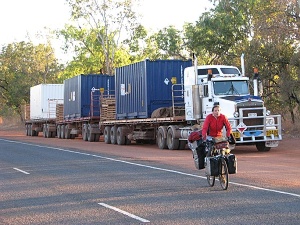
|
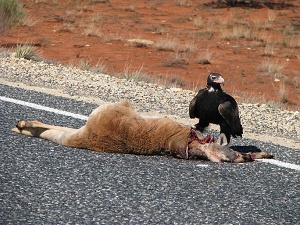
|
There is little traffic on the Stuart Highway, but the "Road Trains" caused us some trouble. They are really huge, most being more than 50 metres long with 3 trailers. Once we counted 22 axles and 86 tyres on one road train. As a cyclist it is sometimes too dangerous to stay on the road when they overtake you. You have to stop until the monster has passed.
We saw many kangaroos killed on the road. Nobody removes their bodies and they lie beside the road until they become skeletons.
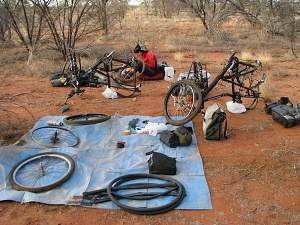
|
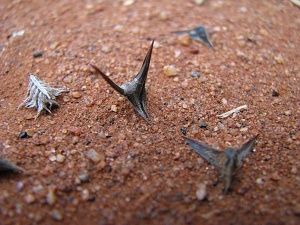
|
Camping is no problem in outback Australia – there is plenty of open space and few people. However there are millions of flies to fight with (thank goodness for fly-nets), water is scarce and the bush is very prickly. One time we had 4 punctures at once, with about 20 prickles in each tyre. Probably we went into the bush blindly!
Although this part of Australia is flat, the 2868 km from Darwin to Beltana have been the most difficult in our journey. The difficulties however, make it more interesting for us.
The biggest problem is the wind. For the first 1500 km to Alice Springs the wind came only from the south-east and because we were heading mostly south, it came almost always from the left front. This is a problem for the mind. Mountains are a different challenge – they are there and you cannot remove them. But when the wind is blowing into your face from the same direction for weeks on end, you ask it, “Why can’t you blow from behind? Why can’t you change direction?” It is like talking to an invisible enemy and it doesn’t answer!
Sometimes we cycled in the night when there was enough light from the moon to illuminate the road, because sometimes there was no wind then. Another trick is to cycle in the sheltered zone of the other cyclist. Often we cursed loudly – how could we be so crazy to fight against this terrible wind for so many weeks?
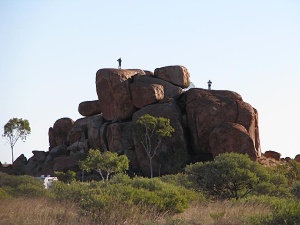
|
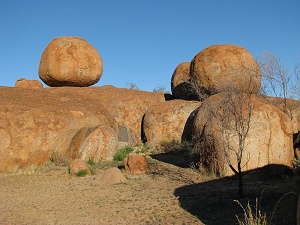
|
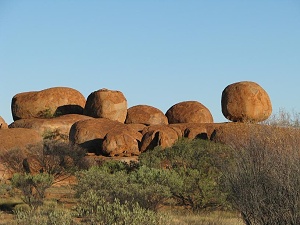
|

|
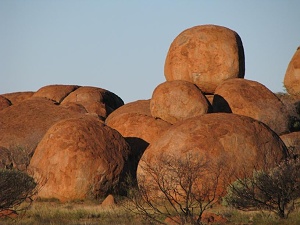
|
Our doubts about what we were doing increased when we met cyclists who were travelling in the opposite direction. They asked why we were travelling in the wrong direction, as if we didn’t know which way the wind was blowing. We had to explain that our aim is to get to New Zealand, and that naturally it is this direction. Our hope that the wind would change got less with every kilometre and many Australians told us that the wind always comes from the south-east in this part of the country. We got no mercy from the people we met, they just laughed Anyway, we didn’t expect mercy; we are old enough to take responsibility for the madness of what we are doing.
This is why we asked ourselves about the sense of our trip. We had proven often enough our ability to cope with hardships and difficult terrain, often in more difficult conditions like the dirt roads in Tibet that crossed passes 5000m high.
In many respects, outback Australia is ideal to cycle: no borders, little traffic, good roads (if you stay on the asphalt), easy camping, flat, no problems with language, not much crime, good maps. If you like mountains you have a problem and the flies are another problem. And of course the wind.
Australia is naturally a unique and fascinating country. The borderless expanses and the isolation of the outback have an indescribable magic. We are happy that most of this country is of no use for humans, because this is why it is like it was millions of years ago – untouched.
We visited the Devil’s Marbles and it is very interesting to think about the different ways of looking at these geological wonders. For us they were huge rock balls or eggs and we didn’t have any idea about how they came to be. We got two explanations and we think you have to be open to both ways of thinking.
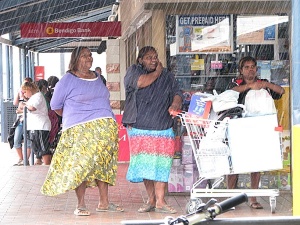
|
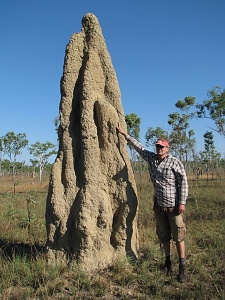
|
Local Aboriginal people say that they are the eggs of the Rainbow Snake (Kurangali) the mightiest animal of their Dreamtime. He sleeps most of the time, but when he wakes up he causes destruction: floods, earthquakes and he sometimes eats people. Scientists say that the Marbles are the remains of liquid lava which has eroded over millions of years. There are no high mountains in Australia and volcanoes stopped erupting here millions of years ago. The ranges of Central Australia are some of the oldest on the planet. Once they were as high as the Himalayas, but erosion over time has left them only a fraction of their previous size. andreaslina@yahoo.de